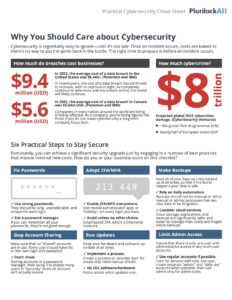In the ever-evolving landscape of cybersecurity, threats to digital systems and sensitive data continue to proliferate. Among these threats, one technique that remains both persistent and perilous is the Brute Force Attack (BFA). A Brute Force Attack is a method employed by malicious actors to gain unauthorized access to systems, accounts, or data by systematically trying all possible combinations until the correct one is found. This deep dive will explore the various aspects of Brute Force Attacks, shedding light on what they are, why they matter, and providing an in-depth analysis of their importance in the realm of cybersecurity.
Understanding Brute Force Attacks
A Brute Force Attack is a type of cyberattack where an attacker systematically attempts all possible combinations of characters, such as passwords or encryption keys, until the correct one is found. This method relies on the sheer computational power to crack passwords or access systems. While it might seem straightforward, the feasibility of this attack method depends on the length and complexity of the password, the strength of encryption used, and the available resources at the attacker’s disposal.
The primary goal of a Brute Force Attack is to compromise a target system’s security by exploiting weak passwords or inadequate encryption. The attack could be directed at various digital entities, including user accounts, online platforms, encrypted files, and more. Generally, a Brute Force Attack can be classified into two main categories: online attacks and offline attacks.
1. Online Brute Force Attacks: In an online attack scenario, the attacker interacts directly with the target system, attempting various combinations of passwords or credentials. This method is often used against web applications, email accounts, or any system that limits the number of login attempts. Attackers might utilize scripts or software that automate the login attempts, cycling through a list of common passwords or employing dictionary words.
2. Offline Brute Force Attacks: In contrast, an offline attack occurs when an attacker gains access to a hashed representation of passwords or data, which is typically stored in a database. The attacker then uses powerful hardware or cloud resources to calculate the hashes of potential passwords and compare them to the stored hashes. This approach is particularly effective when the target system uses weak hashing algorithms or lacks proper salting techniques.
The Significance of Brute Force Attacks
1. Password Weakness:
Brute Force Attacks underscore the importance of robust password policies. Many users still rely on easily guessable passwords, such as “123456” or “password,” which significantly increases the success rate of these attacks. Cybercriminals are well-aware of these tendencies and exploit them to compromise accounts and gain unauthorized access.
2. Vulnerable Systems:
Brute Force Attacks often target systems with inadequate security measures. Systems that lack mechanisms to prevent multiple login attempts, implement account lockouts, or use IP blocking can be more susceptible to these attacks. Therefore, businesses and organizations need to invest in multi-factor authentication (MFA) and intrusion detection systems (IDS) to enhance their defenses against brute force attempts.
3. Data Breaches:
In the context of data breaches, Brute Force Attacks have played a significant role in compromising massive amounts of sensitive data. Attackers exploit weak entry points to gain access to databases containing personal information, financial records, and other valuable data. These breaches not only result in financial losses but can also lead to identity theft and reputational damage for both individuals and organizations.
In-Depth Analysis of Importance
1. Impact on Individuals and Organizations:
The importance of understanding and defending against Brute Force Attacks cannot be overstated. For individuals, falling victim to a Brute Force Attack can result in unauthorized access to personal accounts, leading to privacy invasion and potential financial loss. Moreover, as people often reuse passwords across multiple platforms, a compromised account on one platform can potentially lead to breaches on others.
For organizations, the consequences can be even more severe. A successful Brute Force Attack can lead to a data breach, causing loss of sensitive corporate data, financial repercussions, legal liabilities, and reputational damage. This is especially true for industries dealing with large volumes of customer data, such as finance, healthcare, and e-commerce.
2. Evolution of Brute Force Attacks:
Brute Force Attacks have not remained stagnant; they have evolved in response to advancements in technology. Modern attackers leverage not only raw computing power but also sophisticated software tools and networks of compromised devices (botnets) to amplify their attack capabilities. This evolution emphasizes the need for continuous improvement in cybersecurity strategies to stay ahead of attackers.
3. Cryptography and Encryption:
Brute Force Attacks also shed light on the critical role of cryptography and encryption in safeguarding digital assets. Strong encryption algorithms significantly increase the time and computational power required to crack passwords or access encrypted data. As a result, organizations must adopt encryption best practices to ensure that even if an attacker gains access to encrypted data, they face a monumental challenge in deciphering it.
4. Regulatory Compliance:
The importance of mitigating Brute Force Attacks extends to regulatory compliance as well. Many industries are bound by data protection regulations, such as the General Data Protection Regulation (GDPR) in the European Union or the Health Insurance Portability and Accountability Act (HIPAA) in the United States. Failing to prevent Brute Force Attacks can lead to violations of these regulations, resulting in severe penalties.
Mitigation Strategies
Defending against Brute Force Attacks requires a multi-faceted approach that combines technological measures with user education and awareness. Here are some effective strategies:
1. Password Policies and Complexity: Implementing strong password policies that enforce complexity (mix of upper and lower case, numbers, and special characters) and regularly expiring passwords can thwart Brute Force Attacks. Additionally, educating users about password hygiene and the risks associated with weak passwords can go a long way in reducing vulnerabilities.
2. Multi-Factor Authentication (MFA): MFA adds an extra layer of security by requiring users to provide multiple forms of verification before accessing an account or system. Even if an attacker obtains the correct password, they would need additional factors like a one-time code sent to the user’s device to gain access.
3. Account Lockout and Rate Limiting: Implementing account lockout mechanisms after a certain number of failed login attempts can effectively deter online Brute Force Attacks. Similarly, rate limiting can prevent attackers from making an excessive number of login attempts in a short period.
4. Strong Encryption and Hashing: Using strong encryption algorithms and proper hashing techniques can make offline Brute Force Attacks much more challenging. Salting passwords before hashing adds an additional layer of complexity, making it difficult for attackers to use precomputed hash tables (rainbow tables).
5. Intrusion Detection and Prevention Systems: Employing IDS and IPS can help detect and prevent Brute Force Attacks in real-time. These systems can identify unusual patterns of activity, such as repeated failed login attempts, and take action to block or alert administrators.
6. Regular Updates and Patches: Keeping software, applications, and systems up to date is crucial. Updates often include security patches that address vulnerabilities that attackers might exploit in Brute Force Attacks.
Conclusion
In the realm of cybersecurity, Brute Force Attacks remain a potent and persistent threat, highlighting the critical need for robust defense strategies. The potential impact of these attacks on individuals, organizations, and even regulatory compliance underscores their significance. By understanding the nature of













